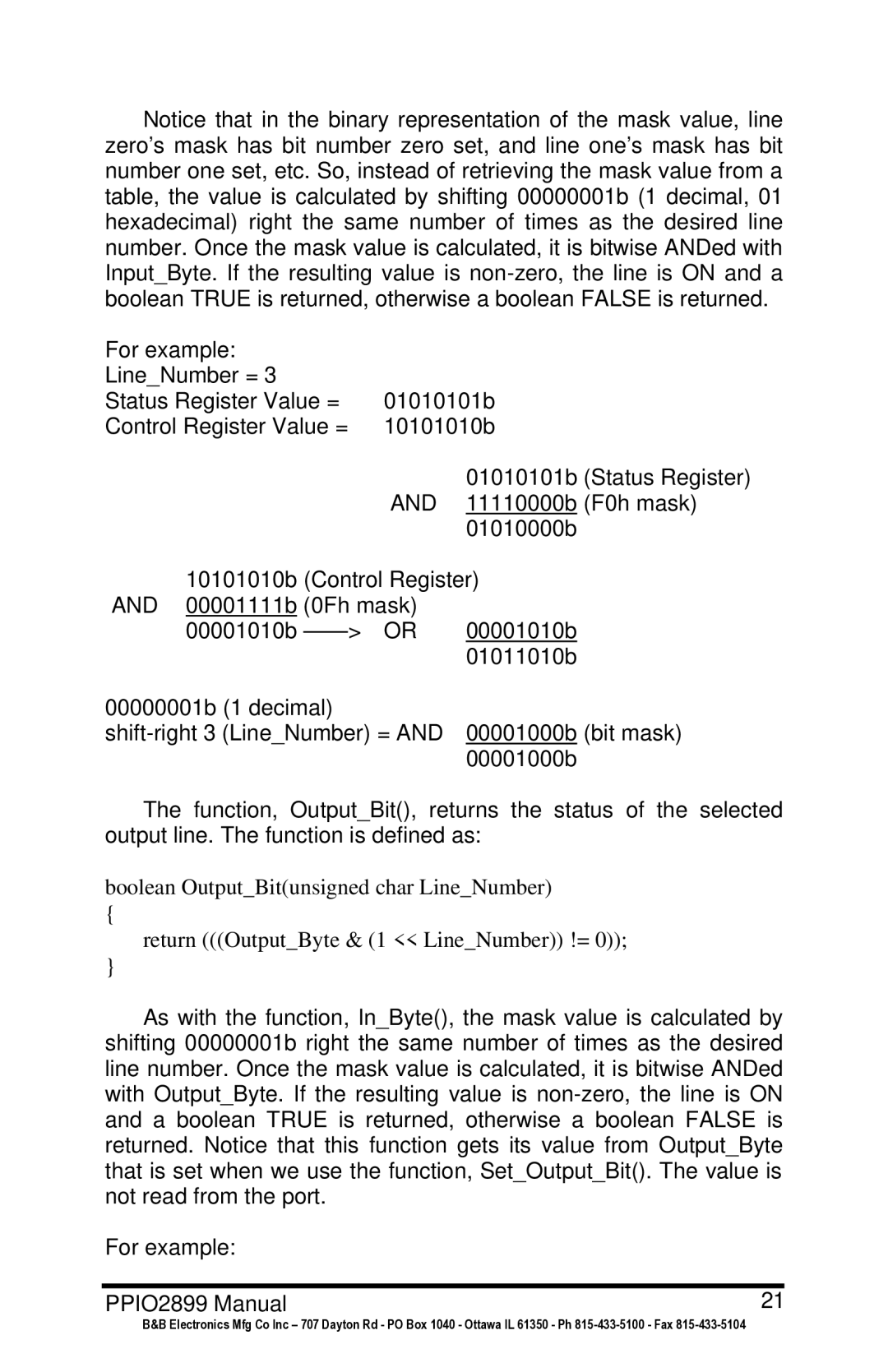Notice that in the binary representation of the mask value, line zero’s mask has bit number zero set, and line one’s mask has bit number one set, etc. So, instead of retrieving the mask value from a table, the value is calculated by shifting 00000001b (1 decimal, 01 hexadecimal) right the same number of times as the desired line number. Once the mask value is calculated, it is bitwise ANDed with Input_Byte. If the resulting value is
For example: |
|
|
Line_Number = 3 |
|
|
Status Register Value = | 01010101b | |
Control Register Value = | 10101010b | |
|
| 01010101b (Status Register) |
| AND | 11110000b (F0h mask) |
|
| 01010000b |
10101010b (Control Register) | ||
AND 00001111b (0Fh mask) |
| |
00001010b | OR | 00001010b |
|
| 01011010b |
00000001b (1 decimal) |
|
|
00001000b (bit mask) | ||
|
| 00001000b |
The function, Output_Bit(), returns the status of the selected output line. The function is defined as:
boolean Output_Bit(unsigned char Line_Number)
{
return (((Output_Byte & (1 << Line_Number)) != 0));
}
As with the function, In_Byte(), the mask value is calculated by shifting 00000001b right the same number of times as the desired line number. Once the mask value is calculated, it is bitwise ANDed with Output_Byte. If the resulting value is
For example:
PPIO2899 Manual | 21 |
B&B Electronics Mfg Co Inc – 707 Dayton Rd - PO Box 1040 - Ottawa IL 61350 - Ph
